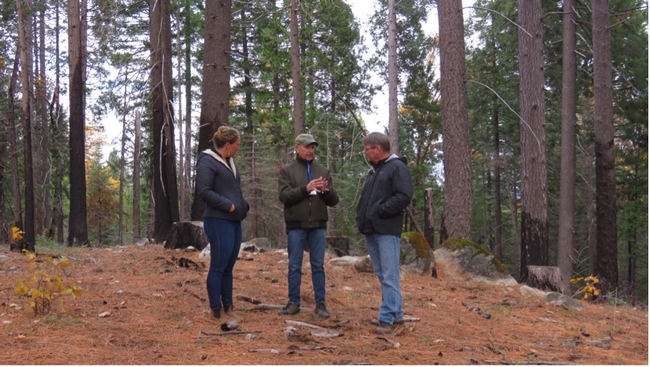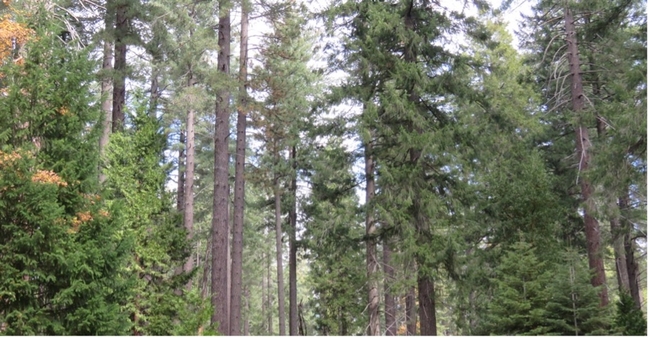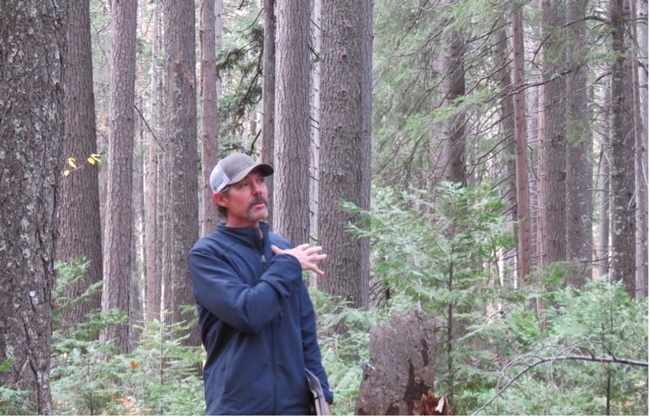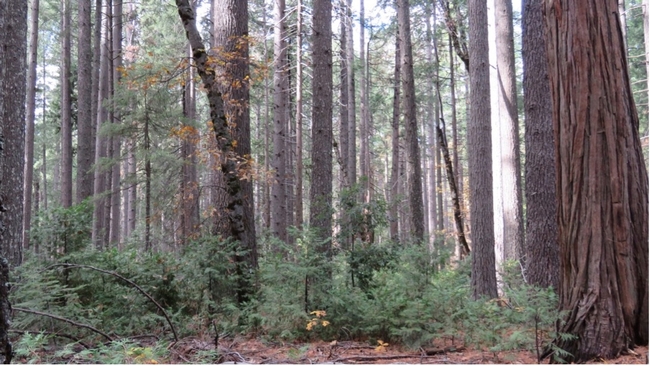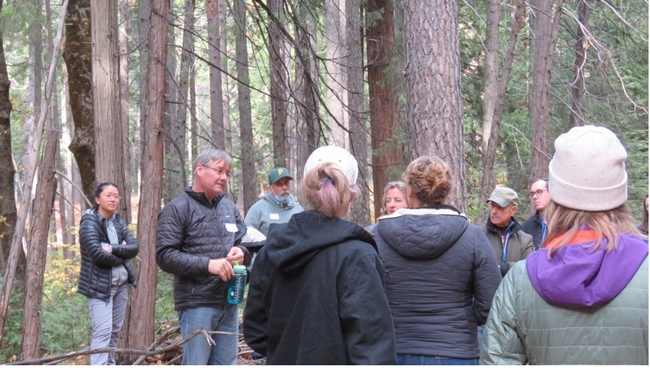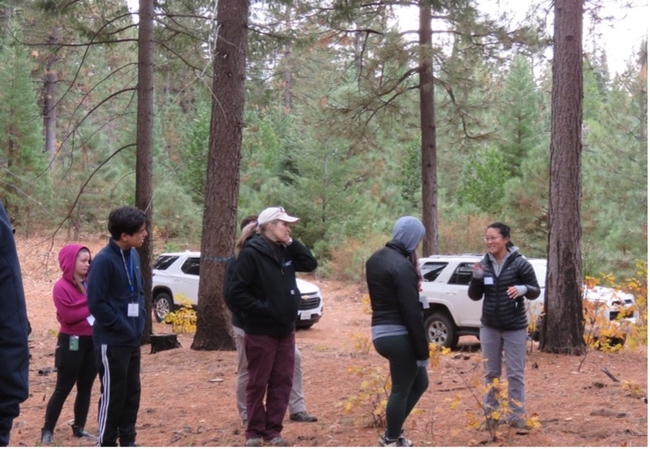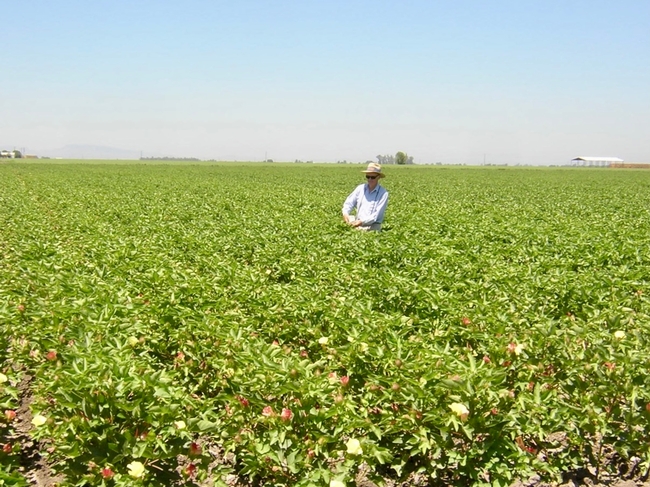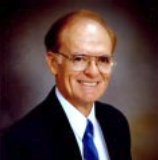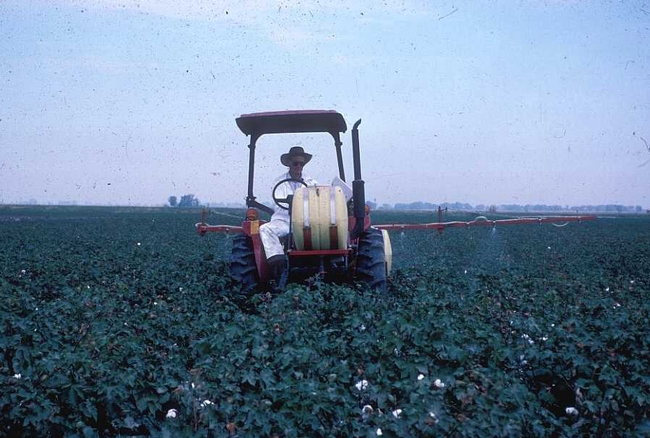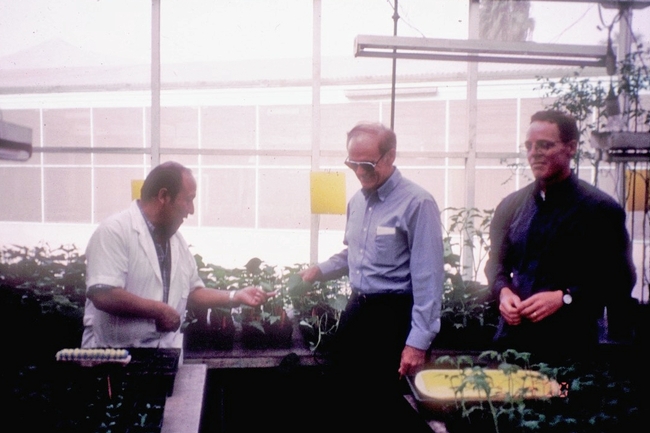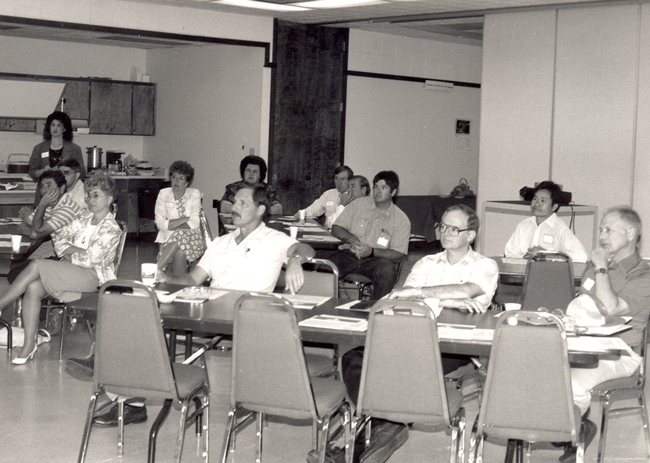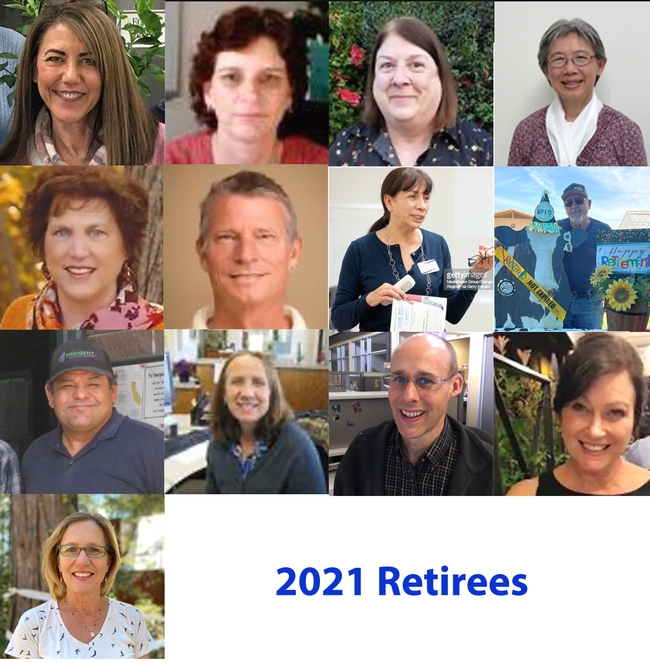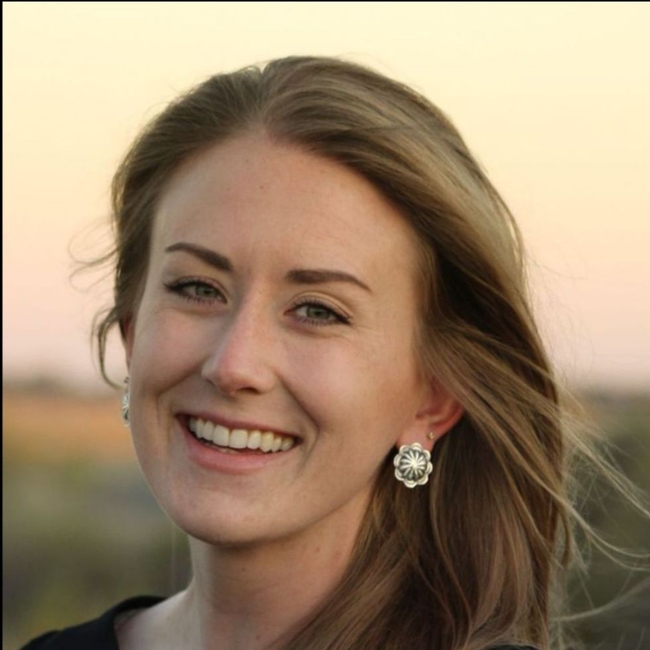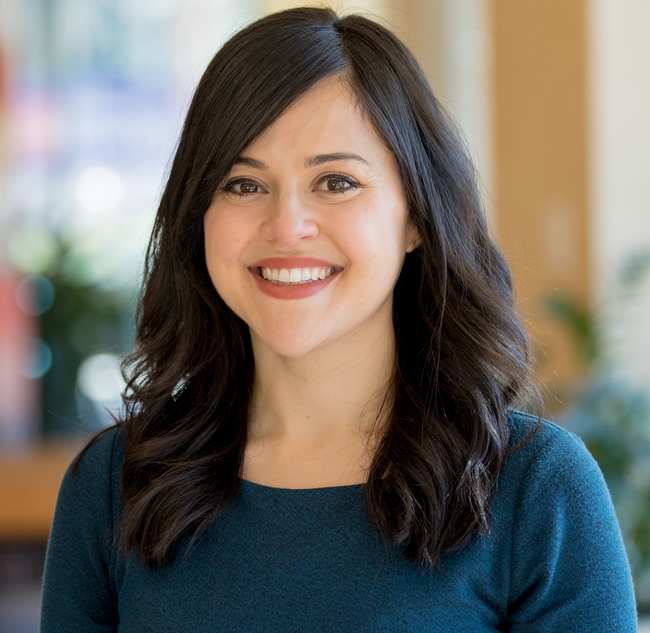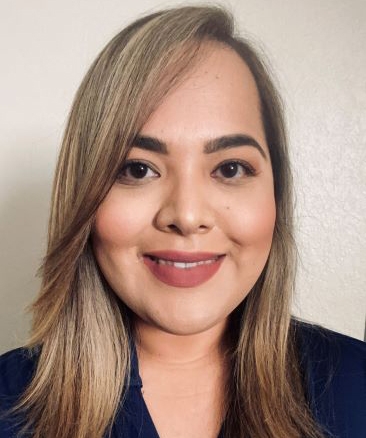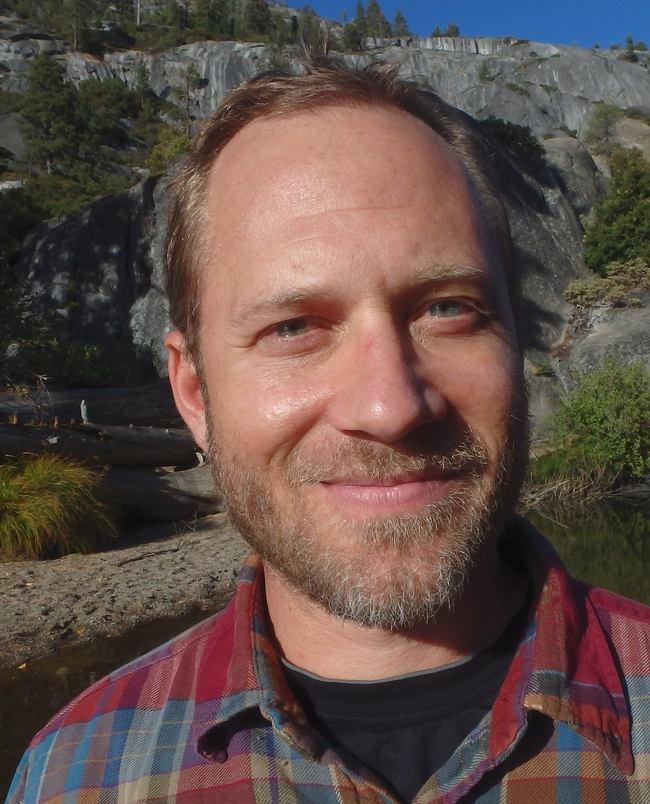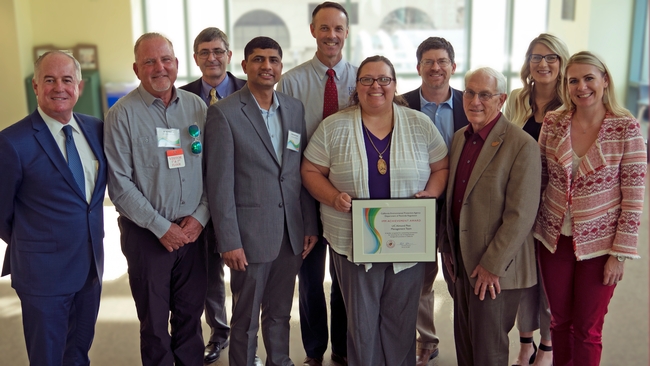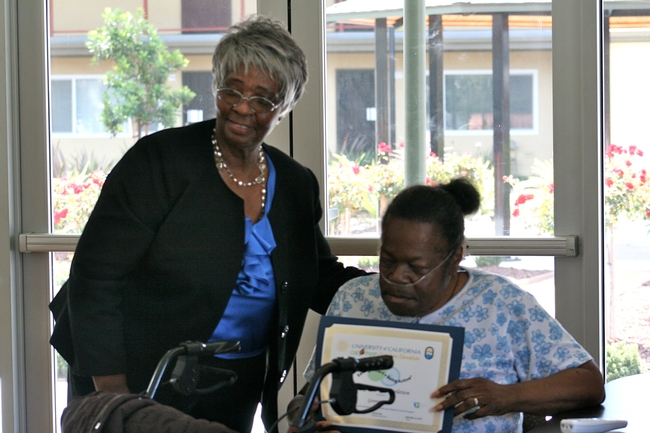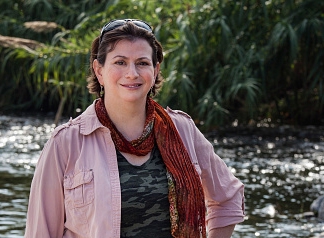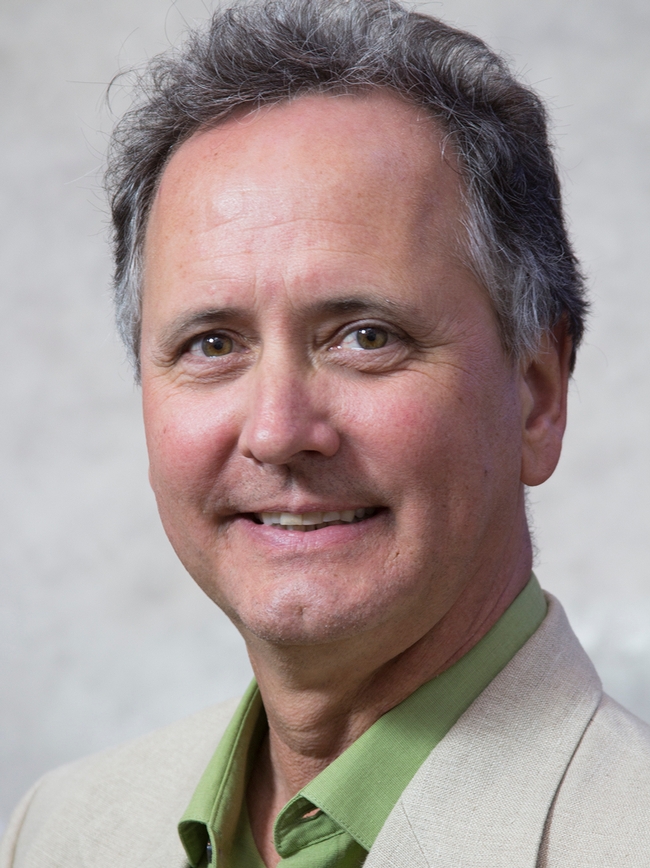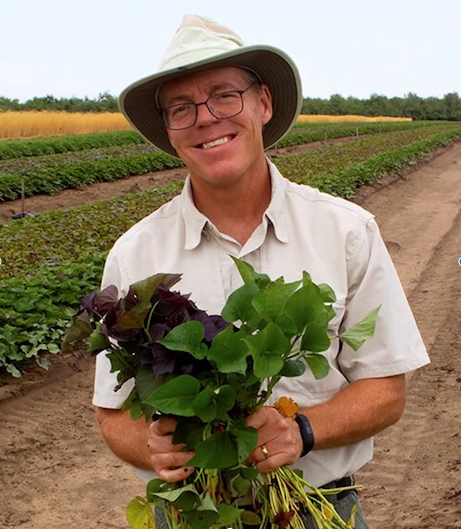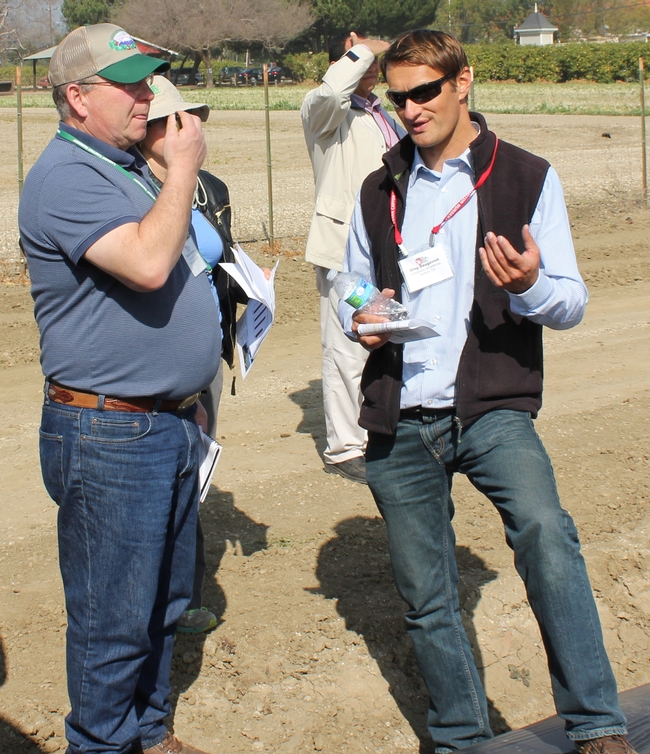Posts Tagged: Will Scott
HBCU-Berkeley Environmental Scholars visit KARE
While tasting avocados and blackberries at Kearney Agricultural Research and Extension Center in Parlier, undergraduate students from historically Black colleges and universities got a taste of California agriculture. Participants in the HBCU-Berkeley Environmental Scholars for Change program took a field trip to the San Joaquin Valley on June 13–14. This is the second year that the program has visited the valley.
Six Spelman College and Tuskegee University students and five Berkeley graduate students, postdocs and research staff visited three locations: Scott Family Farms in Fresno, KARE and Allensworth State Historic Park/Allensworth Progressive Association.
Georgia-based Spelman students Sophia Davis, Jada Joshua, Zahriah Sellers and Eslen Trumble and Alabama-based Tuskegee students Emmanuel Fakunle and Evan Fewell are visiting California this summer to participate in the HBCU-Berkeley Environmental Scholars for Change Program.
“As a social science major, it was really fascinating to get a look at the research process of the people working in the applied natural sciences,” Davis said. “For example, I enjoyed learning about pests on farms, the different environmental challenges farmers deal with, and how people working within Cooperative Extension are devoting time to improve lives and labor of Central Valley farmers."
At Scott Family Farms, Will Scott, legendary elder farmer and president of the African American Farmers of California, taught the visitors how to stake tomato plants to support easy harvest.
“I really enjoyed my time at Kearney Ag Center and the experience of trying new fruits and learning about bug trapping and its importance to farmers,” said Sellers. “My experience there emphasized the importance of farmers' rights and their critical work reinforced the need to highlight and validate their efforts.”
At KARE, staff research associate Ryan Puckett led a tour of the facilities and introduced students to UC Cooperative Extension. Nathalie Baena-Bejarano and Reva Scheibner of the Houston Wilson Lab explained their research on tree nut pests, and had the students dissect navel orangeworm moths, or NOW.
“For our NOW dissections, we had the students looking for internal dye in the moths,” Scheibner said. “We rear some NOW on a red diet as a mark-recapture technique. So, we had the students dissect Moth A non-internal dyed and Moth B internally dyed and compare the two. The students were really into it and even asking for more moths to dissect and compare; it was very inspiring to see their excitement.”
UC Cooperative Extension specialist Mary Lu Arpaia described avocado breeding and sensory evaluation in Kearney's postharvest facility.
“It was inspiring to see so many scientists all working on agriculture, but doing unique and very interdisciplinary projects,” said Fakunle.
On the second day of the tour, the group visited Allensworth, a town founded by Black people in 1908. Allensworth was envisioned as the “Tuskegee of the West” to support Black agricultural and economic sovereignty. Members of the Allensworth Progressive Association introduced the town's long history of resilience in the face of ongoing racism by state policymakers and neighboring white farmers. The visitors toured the historic park and APA's demonstration regenerative agriculture community garden, and over lunch learned about the APA's many food, water and economic justice projects.
Rosalie Z. Fanshel and Benji Reade Malagueño, program staff and Ph.D. candidates in the Department of Environmental Science, Policy, and Management at UC Berkeley, hosted the tour. Kristin Dobbin, assistant professor of Cooperative Extension and close collaborator with the APA, joined the group for the second day.
Since 2021, the HBCU-Berkeley Environmental Scholars for Change Program has brought students together with UC Berkeley faculty and their lab members who do research in a wide range of intersecting environmental fields, such as agri-food systems, biodiversity, climate and water, all with a throughline of justice. Spelman and Tuskegee faculty work with applicants and the Berkeley program co-directors, ESPM associate professor Tim Bowles and Fanshel, to match student interests with faculty research projects at Berkeley.
Over the two-month program, visiting scholars conduct research in one or more of these areas with ESPM graduate students, postdocs and research staff. For students interested in pursuing graduate studies, it also introduces them to the UC Berkeley community.
In addition to the research experience, the program develops a community of belonging through mentorship activities that foster relationships with Black faculty, staff and graduate students at Berkeley and connects participants with vibrant Black environmental and cultural spaces in the Bay Area and beyond.
The scholars also partake in interdisciplinary environmental science skill-building and graduate school preparedness workshops, and field trips, such as the recent one to the Central Valley, to garner exposure to a range of postgraduate environmental science career tracks in academia and community organizations.
These are the 2024 projects:
- Davis is working on drinking water access and environmental justice with Dobbin
- Fakunle is working on animal behavior ecology and diversity with Damian Elias, ESPM professor
- Fewell is working on grassland soil ecology and climate change with Laureano Gherardi, ESPM assistant professor
- Joshua is working on environmental impacts of farm-to-school programs with Bowles
- Sellers is working on water access and climate change with Meg Mills-Novoa, assistant professor in ESPM and the Energy & Resources Group and director of the Climate Futures Lab
- Trumble is working on dryland forest co-stewardship and adaptive management with Miranda Redmond, ESPM assistant professor
The first three years of the program were funded by Berkeley Food Institute, UC Berkeley Office of Graduate Diversity and Spelman College, supplemented by the UC Berkeley Lewis & Kala Diversity, Equity and Inclusion Fund (initiated by UC ANR's very own Vernard Lewis), the Maxwell/Hanrahan Foundation, crowdfunding, individual faculty labs, the UC Berkeley BigC fund, and other small entities. Bowles and Fanshel recently received a $414,210 UC-HBCU Initiative grant to fund the next three years of the program.
UC ANR Fire Network hosts wildfire legislative tour with Berkeley Forests
As California grapples with more frequent catastrophic wildfires, the newly established UC ANR Fire Network plays an integral role in providing and advancing science-based solutions and delivering useful tools throughout the state. Recently, the Fire Network hosted an immersive field tour for California legislative staff in collaboration with Berkeley Forests to demonstrate their work in ongoing fire and forestry research.
“We have such a rich network of fire experts and thought leaders within UC ANR,” said Lenya Quinn-Davidson, Fire Network director. “It was great to have everyone in one place, thinking about how we can best inspire and empower positive change through our research, education, outreach, policy and training.”
During the Nov. 17 tour at Blodgett Forest Research Station, UC ANR staff and academics shared their research and experiences with a diverse group of legislative staff. The tour provided an opportunity for scientists and policymakers to connect over shared goals of addressing California's growing wildfire and forest management challenges.
Legislative staff members included Rita Durgin, legislative aide for Assemblymember Cecilia Aguiar-Curry; Spencer Street, legislative director for Assemblymember Vince Fong; Byron Briones, legislative aide for Assemblymember Freddie Rodriguez; Emily Watson, legislative aide for Assemblymember Joe Patterson; Les Spahnn, legislative director for Senator Bill Dodd; Tammy Trinh, policy consultant for Senator John Laird; and Catherine Baxter, consultant for the Senate Natural Resources and Water Committee.
Sitting on 4,000 acres of Sierra forestland, Blodgett Forest Research Station is the flagship site for research within the Berkeley Forests network. The in-person visit gave attendees the opportunity to learn about the different forest management approaches practiced at Blodgett and understand the importance of maintaining research forests across the state.
“We need research facilities like Blodgett,” Yana Valachovic, UC Cooperative Extension forestry advisor, told the group. “It's a way to ask these questions [about forest management].” The research questions answered through experiments at Blodgett have implications that reach beyond the station's boundary, which was demonstrated to tour guests over three tour stops.
UC Cooperative Extension forestry specialist and Berkeley Forests co-director Rob York led the four-hour tour, where visitors could view different forest management treatments and heavy equipment used for treatment, and learn firsthand about UC-led collaborative research projects.
‘Can you run through it? Can you see through it?'
Tour guests joined York at the first stop, a stand (a group of trees of similar age and size) that has not seen treatment by humans for over 60 years. This first stop was a glimpse at what an unmanaged forest looks like through a forester's or wildfire scientist's eyes. Small trees, less than a few feet tall, clustered under a dense overstory, can facilitate a wildfire's quick movement from forest floor to tree canopy. Close clusters of trees make it much easier for fires to burn across a stand, and the spongy layer of duff underneath the guests' feet burns hot when conditions are dry. These stand conditions, coupled with an abundance of downed woody material, can lead to intense fire behavior when conditions are hot and dry.
Leading California wildfire scientist and UC Berkeley professor Scott Stephens said, “Taking stands that look like this into the future with climate change…is nothing less than a trainwreck.” He and York emphasized that a forest's odds of persisting through wildfires are greatly increased when fuel loads are reduced and forests are thinned. York introduced his measure for healthy forest density, suggesting that guests ask themselves: “Can I run through it? Can I see through it?” the next time they visit a forest.
This is not to say that all fire is bad for a forest. Fire is a part of a healthy forest ecosystem and has been for thousands of years, thanks to natural ignitions from lightning and Indigenous stewardship and cultural practices.
The second stop on the tour was a stand where the overstory (canopy) had been thinned, but the surface fuels were not treated with prescribed fire. York explained that solely thinning a forest was not the answer, and that the best treatment would merge prescribed fire and overstory thinning treatments. In fact, a primary facet of the Fire Network's goals has been to increase the number and strength of community-based Prescribed Burn Associations (PBAs). Since 2017, 24 PBAs have formed throughout California and they greatly increase community capacity for prescribed fire in both forested and non-forested ecosystems.
Eating broccoli before dessert?
The tour ended at a stand that had seen both thinning and prescribed fire treatments. It is part of an experiment comparing prescribed fire emissions to wildfire emissions. Another fuels management experiment happening at Blodgett studies livestock grazing as a tool to manage live fuel loads. This project is a collaborative effort between UCCE livestock advisor Dan Macon, Fire Network coordinator Katie Low, and other ANR advisors and specialists. The effort exemplifies the way wildfire demands attention and innovation from outside the fire and forestry fields.
Macon and Low are examining the efficacy of goat grazing and its implications for animal health at Blodgett. This entails seeing how they can encourage goats to graze unfamiliar vegetation. Likening it to human behavior, Low asked the group, “If it was late at night, and you're craving a snack, which would you eat first: a bowl of steamed broccoli? Or your favorite dessert?” The goats that Macon and Low monitor clearly fill up on their “dessert” first and need extra encouragement to graze the woody vegetation, requiring more intervention on the herder's part. Through these glimpses into their research, Macon, Low and York demonstrated to the group that researchers are taking many approaches to help increase the state's wildfire resilience.
Sitting at a critical point of both research and application, UC ANR staff were able to give visitors their unique perspective on the topics of climate change, prescribed burning and forest management on this tour.
York, Stephens and Fire Network members maintained that California policy is moving in the right direction, but encouraged legislative staff to cease measuring impact through one lens. “It's not just about how many acres have been treated,” Stephens emphasized. “It's about impact. It's about changing the direction of the forest.”
In memoriam: Bill Weir
Bill Weir, UC Cooperative Extension advisor emeritus, passed away on July 28 in Merced. He was 84.
Born in in San Antonio, Texas, Weir earned his B.S. at Texas A&M University and his M.S. in vegetable crops and his Ph.D. in soil science at UC Davis.
Weir began his UC career as a staff research associate at UC Davis in 1966. In 1974, he joined UC Cooperative Extension as a field crops advisor in Merced County, where he worked until he retired in 2002. Weir worked on sugar beets, rice, barley, wheat, corn, dry beans, rye and oats, but is best remembered for his contributions to cotton. He became known as the "Father of narrow-row cotton" as his research showing increased cotton yields convinced growers to switch from planting on 40-inch beds – the width of a horse – to 30-inch beds.
In the 1970s, after observing that sunlight reached the soil between rows even late in the season, Weir began comparing narrow-row plantings of cotton with conventional 40-inch spacing, experimenting with various cotton varieties and plant populations.
Working with a local Merced County grower, Weir designed the first 30-inch spindle cotton harvester in the world by converting a conventional 40-inch picker. “Results of our tests led both John Deere and International Harvester to produce commercial 30-inch spindle cotton harvesters,” Weir wrote in a UC Delivers story.
By the time he retired, greater yields from narrow-row cotton generated over $7 million more revenue per year for growers in Merced County alone. Growers in other counties, other states and other countries adopted the practice.
Weir was also part of the research team that developed a technique called plant mapping. “We learned how to let the plant tell us what it needs and then act accordingly,” Weir said. “We were able to cut back on inputs, saving growers money.”
Scott Stoddard, UCCE vegetable crops farm advisor for Merced and Madera counties and director for UCCE in Merced County, joined UCCE in 1998. For the first four years, he worked as a staff research assistant with Weir on research projects in cotton, tomatoes, melons and sweetpotatoes.
“I was hired as an SRA to help Bill with his new veg crops responsibilities. Bill taught me so much about central California agriculture,” Stoddard said.
Stoddard recalled accompanying Weir to view test plots.
“We would ride together in his Chevy pickup – Bill preferred Chevrolet over Ford because they rode smoother – to a test plot and discuss soil types and salinity and the impacts on crop selection, drainage, and the eventual creation of Kesterson Wildlife Refuge. While cotton was always his main crop, he knew a lot about the melon industry and how to pick a ripe honeydew or watermelon in the field – which is a lot harder than a cantaloupe!”
“Bill preferred taking the back roads to get to farm calls and test plots. We would take the ‘long way' to West Side Research and Extension Center in Five Points, as it gave him the opportunity to see what was happening with all the different crops being grown on the west side of Merced and Fresno counties,” Stoddard recalled.
“August was his favorite time of the year because that's when everybody, from tractors to trucks, was so busy with harvest of so many commodities. He never complained about the 100-degree days – in fact I think he enjoyed the heat.”
During his career, Weir authored or coauthored 195 peer-reviewed or scientific papers. His many awards included the 1993 and 1995 Certificate of Excellence Awards from the American Society of Agronomy.
When he retired, Weir said, “Over the years, there were many changes in Extension. But, all in all, Extension has been great for me. If I were independently wealthy, I still would have liked to do what I did during my career. That's how much I've enjoyed working in agriculture, helping farmers and being a part of Extension.”
In retirement, Weir became a private crop consultant and enjoyed gardening and wood working.
He is survived by his wife Carol, son Daniel Louis Weir and daughter-in-law Teresa, daughter Deborah Leanne Weir and eight grandchildren.
Read more about Weir's life at https://www.legacy.com/us/obituaries/mercedsunstar/name/billy-weir-obituary?id=36127405.
Congratulations to retiring ANR colleagues
We thank the following UC ANR employees for their many years of contributions to improve the lives of Californians. Best wishes to all of them in their retirement years.
Rafael “Merf” Solorio, superintendent, West Side REC, 31 years
Jeannette Warnert, communications specialist, 31 years
Melanie Caruso, Program Planning and Evaluation research administrator, 28 years
Scott Parker, Master Gardener community education specialist, UCCE San Diego County, 22 years
Chutima Ganthavorn, UCCE nutrition, family and consumer sciences advisor, Expanded Food and Nutrition Education Program (EFNEP) and CalFresh Healthy Living, UC, Riverside and San Bernardino counties, 22 years
Rosemary Carter, Program Manager, CalFresh Healthy Living, UC, Placer and Nevada counties, 20 years
Will Suckow, senior artist, 20 years
Cheryl Fraser, 4-H community education specialist, UCCE Alameda County, 15 years
Mary Vlandis, Human Resources, 13 years
Hilda Perez, nutrition educator, EFNEP, Orange County, 13 years
Armando Silva, farm machinery mechanic, Desert REC, 10 years
Nancy Starr, assistant II, UCCE Central Sierra, 10 years
Emily LaRue, associate director, UCCE Business Operations Unit, 6 years
Names in the News
Woodmansee named UCCE livestock and natural resources advisor
Grace Woodmansee will join UC Cooperative Extension in Siskiyou County as a livestock and natural resources advisor on Jan. 4, 2021.
For the past four years, Woodmansee worked as a research assistant and UC Davis student in the UC Rangelands lab to address management challenges on grazing lands.
“As an undergraduate research assistant at the Chico State Beef Unit, I discovered my passion for rangeland science and management a discipline that combines my interests in social, ecological and livestock production research,” said Woodmansee, who completed her Master of Science in agronomy at UC Davis in November.
“I am very excited to join the community of Siskiyou County and to work with ranchers and land managers to identify research priorities, develop projects and address challenges related to livestock production and natural resource management,” she said.
Woodmansee will be based in Yreka and can be reached at gwoodmansee@ucdavis.edu.
Marandi joins Program Planning and Evaluation
Leyla Marandi joined UC ANR's Office of Program Planning and Evaluation as a program policy analyst on Nov. 30. She works with Katherine Webb-Martinez, Kit Alviz, and Chris Hanson to evaluate UC ANR's programs and contribute various annual reports. Marandi will be managing the UC Delivers Blog and will assist colleagues who want to contribute an impact story.
Before joining UC ANR, Marandi worked for local government and nonprofits on community wellness and food security. She learned UC Cooperative Extension was working toward the same goals. In her last position at the Center for Ecoliteracy, she managed their California Food for California Kids initiative, which works statewide to increase public schools' commitment and capacity for serving fresh and locally grown foods.
She earned a B.A. in political science from UCLA and a Master of Public Health from the University of Southern California.
Marandi is based in Oakland at UCOP and can be reached at (510) 987-0100 and leyla.marandi@ucop.edu.
Vargas promoted to community education supervisor 1
Rosa Vargas has been promoted to Community Education Supervisor 1 for CalFresh Healthy Living, UC, working for UC Cooperative Extension in San Luis Obispo and Santa Barbara counties.
Vargas, who holds a Master's in Public Administration and a bachelor's degree in business administration, both from California State University, Stanislaus, began working for CalFresh Healthy Living, UC in San Luis Obispo and Santa Barbara counties as a Community Education Specialist II in March 2019.
As a public health professional, she has experience coordinating and implementing programs focusing on activity promotion, healthy eating, chronic disease management, maternity management, and tobacco cessation for adults and youth.
Vargas is based in San Luis Obispo and can be reached at rivargas@ucanr.edu.
Sutherland and almond advisors honored for IPM work
UC Cooperative Extension pest management advisors recently received honors from the International IPM Symposium for their work promoting safe and sustainable pest management.
Andrew Sutherland received an award of excellence for integrated pest management practitioners at academic institutions, and the California Almond IPM Team received a team award of excellence.
The honors are awarded to people or teams based on demonstrated results in:
- Reducing human health risks
- Minimizing adverse environmental effects from pests or pest-management activities
- Improving economic returns by reducing input costs or improving product or service quality
- Documenting outcomes such as reduced pesticide use, hazard reduction, improved economic returns or positive environmental impacts
- Developing or implementing innovative strategies
- Working successfully with teams
Sutherland is being honored for his pioneering work as the first Area Urban IPM Advisor in California, a position he has served since 2012. With no prior program or predecessor to follow, he was faced with the task of serving the IPM needs of over 15 diverse stakeholder groups ranging from structural, industrial and household pest control operators to retail store staff, housing and lodging managers and childcare providers. Some of the focus areas of his program include bed bugs, cockroaches and termite remediation and reduced-risk pest management in childcare facilities and low-income multi-unit housing. One of Sutherland's notable projects was the development of a clearinghouse website for bed bug prevention and management information, serving site-specific and state-specific client groups in the Western United States.
The California Almond IPM Team, composed of UC Cooperative Extension advisors and others, is being recognized with the Award of Excellence - Team as a role model for the implementation of integrated pest management practices.
Team members are UC Cooperative Extension advisors David Haviland and Jhalendra Rijal, former Cooperative Extension advisor Emily Symmes, Brad Higbee, who retired from Paramount Farming Company, and Charles Burkes of USDA-ARS.
For more than a decade, the team conducted research on navel orangeworm, spider mites, leaffooted bugs and ants that laid the groundwork for IPM adoption in almond orchards. The team's efforts pushed mating disruption along the IPM continuum from basic to applied research, applied research to demonstration plots, demonstration plots to extension, and extension to adoption and implementation against California's key pests of almonds. The team represents a prime example of the impacts that can be achieved through multi-organizational collaborative efforts. These collaborative efforts included private farming companies, university and U.S. Department of Agriculture scientists, extension specialists, growers and their associated commodity board.
For a full list of award winners, see https://ipmsymposium.org/2021/awards.html.
Blackburn honored by Alameda County Board of Supervisors
Mary Blackburn, UC Cooperative Extension nutrition, family and consumer sciences advisor, was honored Dec. 8 by the Alameda County Board of Supervisors with a resolution for her 50-plus years of work to help older adults, pregnant teens and other vulnerable people in Alameda County improve their health.
Blackburn, who has worked for UC ANR since 1990, joined the supervisors via Zoom to accept the honor and said she hopes the recognition motivates young people to serve their communities.
Noting her career began amid the racial unrest and turbulent times of the 1960s, Alameda County Supervisor Keith Carson said, "These kinds of accomplishments were pioneering."
Watch the 10-minute presentation at https://youtu.be/PbTwfcU7nBc and read more about Blackburn's career at https://bit.ly/2ShbLUj.
Drill appointed to NUEL Steering Committee
Sabrina Drill has been appointed to the National Urban Extension Leaders (NUEL) Steering Committee for a three-year term (2021-2023). She succeeds Fe Moncloa, who previously held the position.
NUEL encourages work across programmatic areas to serve the diverse needs of urban communities.
“My own area of interest, from the natural resources viewpoint, is to look at and extend the ways that urban ecosystems can enhance the resilience of cities,” Drill said. “For example, on the engineering side, this can mean applying nature-based solutions, such as floodplain restoration and rain gardens, to improve water supply and quality and to reduce the impacts of flooding. It also means benefiting urban communities by making sure that they have equitable access to the physical and mental health benefits of natural areas – in other words, paying special attention in park-poor lower income areas, and working to reduce barriers to access to nature for communities of color.”
Other extension personnel may focus on nutrition, community gardening and food deserts, or the needs of urban youth for positive development opportunities.
NUEL seeks to support extension academics working in these areas by providing professional development opportunities and promoting multistate collaboration and knowledge sharing for research and extension programming.
Parker named president of National Institutes for Water Resources
Doug Parker, director of UC ANR's California Institute for Water Resources, has been named president of the National Institutes for Water Resources. NIWR is the organization of Water Resources Research Institutes, including California Institute for Water Resources, across the U.S. There are 54 NIWR institutes, one in every state and the District of Columbia and the territories.
NIWR cooperates with the U.S. Geological Survey to support, coordinate and facilitate research through the annual base grants, national competitive grants, coordination grants, and in operating the NIWR-USGS Student Internship Program.
Stoddard and Daugovish receive vegetable research award
Scott Stoddard, UCCE vegetable crops farm advisor for Merced and Madera counties, and Oleg Daugovish, UCCE strawberry and vegetable crop advisor for Ventura County, were presented the Oscar Lorenz Vegetable Research Award during the Vegetable Crop Program Team meeting Dec. 11.
The UC Davis Plant Sciences Department established the Oscar Lorenz Vegetable Research Award and presents it annually to individuals contributing to vegetable research.
Stoddard, who has been with Cooperative Extension for 22 years, focuses his research program primarily on tomatoes, sweet potatoes and melons, with an emphasis on plant fertility, variety evaluation, pest management and particularly weed management.
“He is THE California sweetpotato expert, collaborating with other U.S. sweetpotato production areas on variety development and evaluation,” said Brenna Aegerter, who presented Stoddard's award. “He has also made great contributions to pest management in sweetpotato. Scott is a great colleague and researcher. He is practical, grower-oriented, hardworking and has great ideas.”
“Oleg has contributed to development of Chateau herbicide for celery and strawberry, and several herbicides in strawberry,” said Steve Fennimore, who presented Daugovish's award. “He currently is a key member of a group that is developing precision soilborne disease management strategies for strawberry and vegetable crops in rotation with strawberry. Oleg is a master of languages besides Russian and English. He has learned Spanish and I have heard several of his extension presentations in this language and he is fluent. He is engaged internationally and has done several projects in Africa and the Middle East to help poor farmers in developing countries.”
Oscar Lorenz, a UC Davis professor of vegetable crops from 1941 to 1982, is remembered as an exceptional scientist, administrator and for his dedication to the California vegetable industry.
Each Lorenz award recipient will receive a plaque and a check for $1,000.






